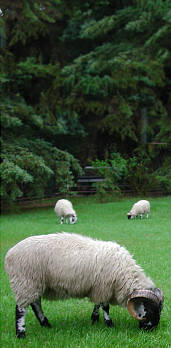
this page last updated May 09/07
Typo corrected

PO Box 200 . Amisk, AB . T0B 0B0 (780) 856-3738 mail@nordinfarms.com |

|
While this ancient breed is uncommon in North America, it is one of the most
common breeds in the UK, with about a million head in Scotland alone.
 They are prized for producing a lean carcass with a distinctly mild flavoured
meat. They are not only excellent tasting as lambs, but also as mutton.
They are prized for producing a lean carcass with a distinctly mild flavoured
meat. They are not only excellent tasting as lambs, but also as mutton.
Their unique, durable and resilient wool is used widely in the Italian mattress trade, and for such famed products as Wilton carpets, and Harris Tweed handwoven fabrics. In North America their wool is primarily used by handspinners (more...). Scottish Blackface are a medium-sized sheep, with coarse wool, and can be expected to produce a lamb crop of 125-180% annually. It is understandable that this breed has been overlooked in the North American market where numerous hybrid sheep breeds are available affording shepherds the advantages of 200-250% lamb crops. So why choose Scottish Blackface?
These sheep can consistently produce under less than favourable conditions.
Bred for their ability to endure harsh highland weather and forage
(see Bush Busters), these robust little
sheep can readily gain condition after lambing.
They naturally include less palatable forage into their diet allowing them to better utilize poorer feed conditions. This results in less orphaned lambs rejected by mothers too weak to raise them. And, the lambs themselves are quick to suckle resulting in higher lamb survival rates. Their smaller size and thriftiness mean less feed requirements. The Bottom Line
If you've got lovely weather and endless lush pasture, then there is a
modern hybrid for you, but...
if you have tough or variable conditions, be they steep hill country, scanty forage, or harsh winters, this is a breed to be reckoned with. Scrapie Resistance
Recent BSE concerns have fueled the quest for genetic
disease resistance. There is some evidence that Scottish Blackface sheep, as a
breed, are Scrapie resistant.
"...there has never been a single case of scrapie
in the Blackface sheep breed..."
The Scottish Farmer
by Patsy Hunter;
29 June 2002, p. 5.
|
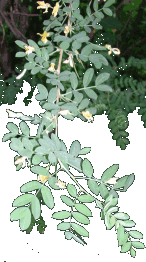
|
Our sheep are great for clearing bush and for pasture improvement. They not only eat dandelions, thistles, buckbrush, silver willow and other weeds, but they love caragana. Because both the ewes and rams of the Scottish Blackface have horns, they make quick work of heavy brush. |
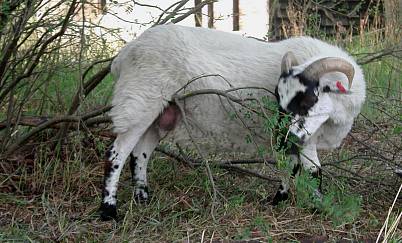
|
|
| Using their horns and bodies, they pull down branches and saplings so they can strip the leaves. They are able to turn impenetrable undergrowth into a cleared pathway in a very short time. |
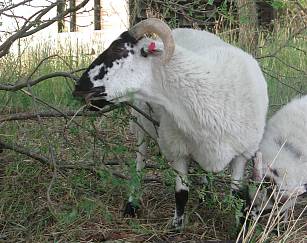
|
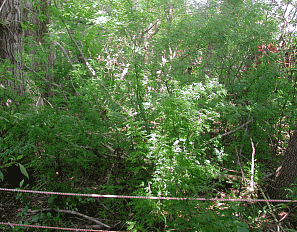
Three days work
(you may have to wait for animation to begin) |
Because of their strong browsing tendency, you don't have to wait for the pasture to be stripped before the bush is cleared. The sheep naturally diversify their foliage consumption which means you will see pasture improvement right from day one. |
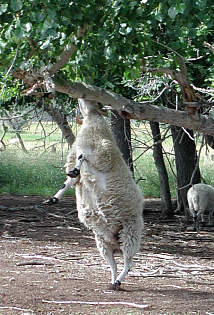 |
Agility & Strength
No, this sheep hasn't hung itself, she's simply demonstrating the powerful frame of this hill-climbing breed. Not many sheep have this ability or inclination. |
| At first glance it looks like she's standing on another ewe's back, but if you look closely, you'll see she's just very adept at reaching those leaves. |
 |